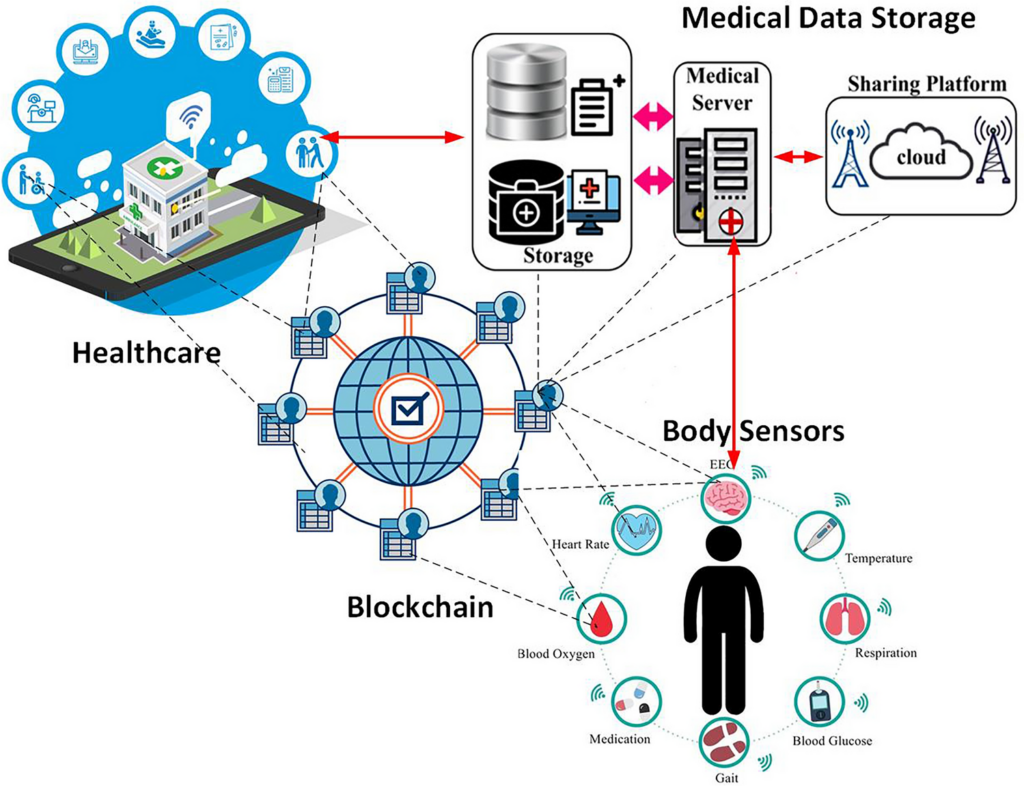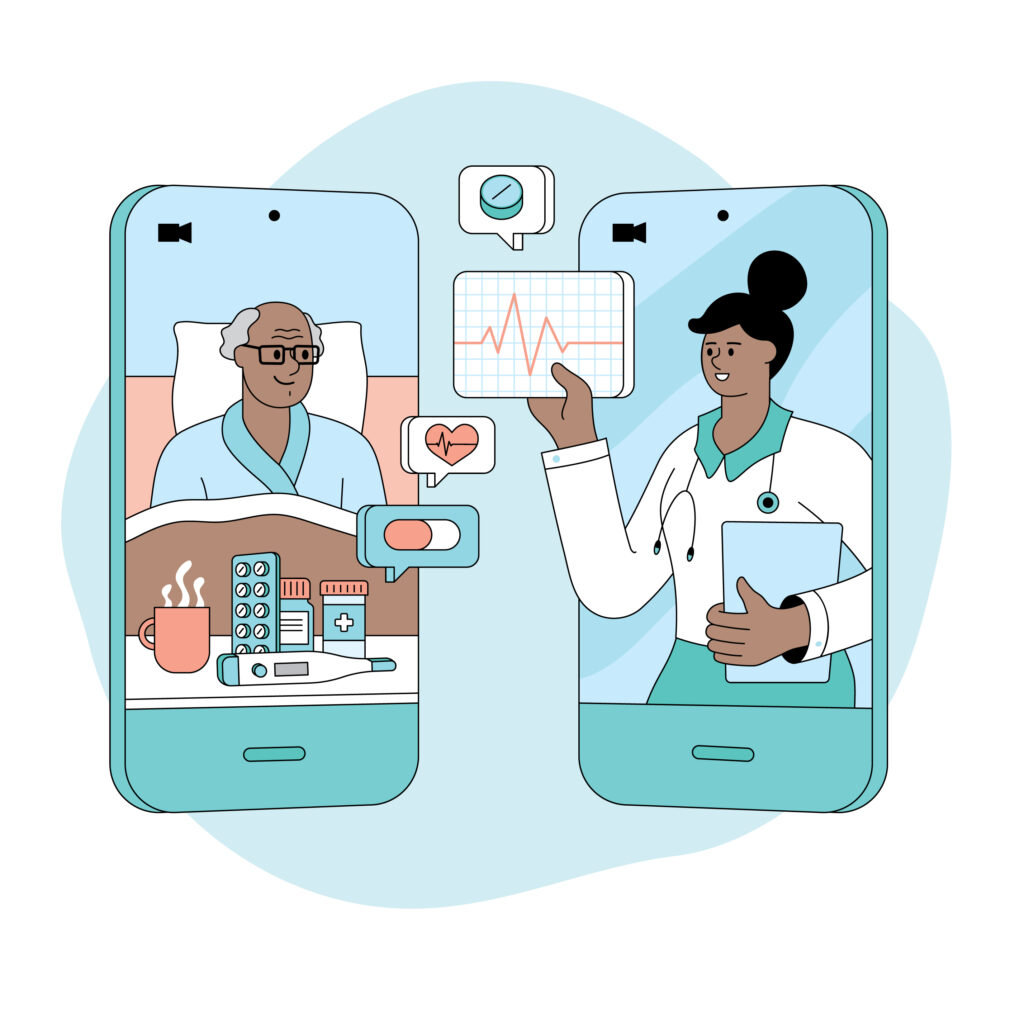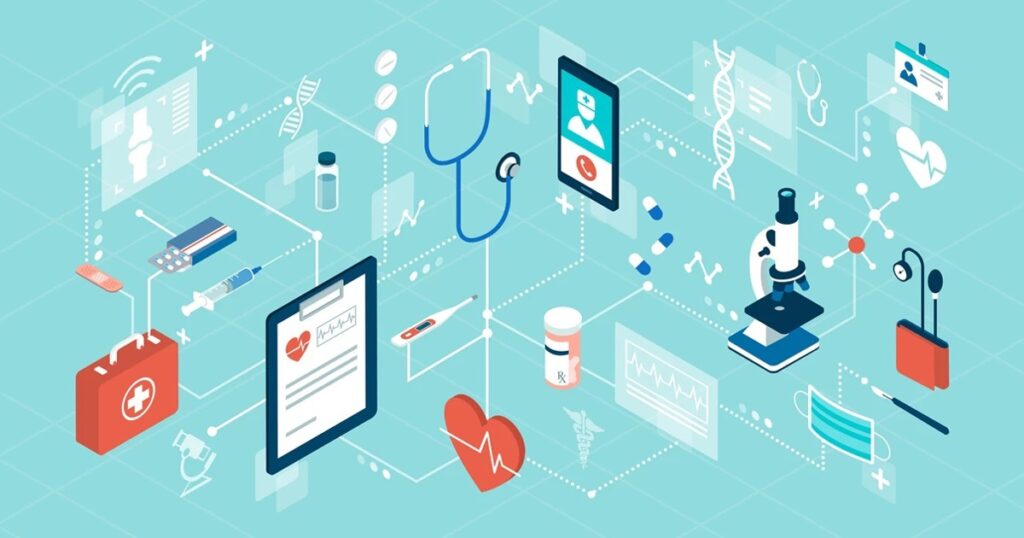The Future of Healthcare: Benefits of Telehealth Services

The Future of Healthcare: Exploring the Benefits of Telehealth
The healthcare industry is quickly evolving, driven by technological advancements, patient demands for more convenient care, and the increasing importance of digital solutions. Among these innovations, telehealth has emerged as a key of modern healthcare, offering remote care delivery through digital tools. Telehealth is reshaping the way healthcare services are delivered by improving access, reducing costs, and improving patient outcomes. This paper broadly goes through the benefits of telehealth services, with a focus on the growing role of e-pharmacies, e-consultations, e-prescriptions, and IoT technologies in healthcare’s future.
The Expansion of Telehealth: A New Era for Healthcare
Telehealth was already on the rise before COVID-19, but the pandemic accelerated its adoption. As in-person visits became challenging, both healthcare providers and patients quickly took in virtual care options. Telehealth is now proving to be a long-term stack of digital solutions which enhances patient care through digital innovation. Its benefits span across various healthcare services, including e-consultations, e-pharmacies, and e-prescriptions, all of which are revolutionizing the healthcare landscape.
Key Benefits of Telehealth Services
Improved Access to Care Through E-Consultations
Telehealth significantly enhances patient access to healthcare services by enabling virtual consultations. The consultations allow patients to interact with healthcare professionals from their own homes, reducing the need for travel and wait times, particularly for routine care or non-urgent medical issues. E-consultations are especially beneficial for patients in rural or underserved areas where healthcare facilities may be limited.
In addition, e-consultations make specialized care more accessible, as patients can consult with experts regardless of geographic location. This flexibility allows patients to seek timely medical advice, leading to earlier interventions and improved health outcomes.

The Rise of E-Pharmacies
With the growth of telehealth comes the increased use of e-pharmacies, which allow patients to order medications online and have them delivered to their homes. E-pharmacies offer a convenient alternative to traditional pharmacies, especially for individuals who are unable to visit physical locations due to health conditions, mobility issues, or distance. By integrating e-pharmacy services into telehealth platforms, patients can receive prescriptions directly from e-consultations, making the process seamless and efficient.
E-pharmacies also help streamline prescription fulfillment, minimize dispensing errors, and offer real-time inventory management. This combination of benefits not only enhances patient convenience but also improves pharmacy operational efficiency.
E-Prescriptions for Better Medication Management
E-prescriptions minimize the risk of errors associated with handwritten prescriptions, such as illegibility or dosage mistakes. Additionally, e-prescriptions make it easier for providers to monitor a patient’s medication history, prevent prescription overlaps, and manage chronic conditions more effectively.
For patients, e-prescriptions eliminate the need for paper prescriptions and reduce the wait time at pharmacies, as medications are often prepared before they arrive. The use of e-prescriptions also contributes to better medication adherence by simplifying the process and allowing for automatic prescription refills.
IoT Technologies Enabling Remote Monitoring
The Internet of Things (IoT) is playing a pivotal role in the expansion of telehealth by enabling real-time, remote monitoring of patients’ health conditions. IoT devices, such as wearable sensors, smart health monitors, and connected medical devices, collect valuable health data and transmit it to healthcare providers for analysis. This continuous data stream enables early detection of potential health issues, allowing for timely intervention and improved management of chronic conditions.
For example, IoT devices can monitor a patient’s heart rate, blood pressure, glucose levels, and physical activity, offering healthcare providers actionable insights into their patient’s health. This remote monitoring capability is particularly beneficial for managing chronic conditions like diabetes, hypertension, and cardiovascular diseases. Patients benefit from personalized care without the need for frequent in-person visits, while providers can deliver more proactive care.
A set of over 2,900 journals published on Science Direct summarized the improtance of IoT “By gathering and transmitting real-time health data of patients to clinicians, IoT will not only cut health service costs but also allow for the early detection and treatment of health issues”

Cost Savings for Both Patients and Providers
Telehealth services offer significant cost savings by reducing the need for in-person visits, hospital readmissions, and emergency room visits. E-consultations, e-prescriptions, and e-pharmacies help lower transportation costs for patients and enable them to access affordable care from their homes. In many cases, virtual visits cost less than traditional appointments because they require fewer resources, such as physical office space or administrative support.
For healthcare providers, telehealth reduces overhead costs and improves resource allocation by freeing up time for more critical in-person care. Telehealth platforms can also reduce patient no-show rates, as the convenience of virtual appointments makes it easier for patients to attend their scheduled consultations.
Better Chronic Disease Management
Telehealth, combined with IoT technologies, enhances the management of chronic diseases. Patients with conditions like diabetes, asthma, or heart disease benefit from consistent monitoring and easy access to healthcare providers through virtual visits. This ongoing engagement helps prevent complications, reduce hospital admissions, and improve patient adherence to treatment plans.
Moreover, telehealth platforms often incorporate tools like medication reminders, personalized health tracking, and virtual follow-ups, further improving patient outcomes and allowing healthcare providers to intervene early when issues arise.
Enhanced Mental Health Care
The rise of telehealth has expanded access to mental health care services, addressing the growing demand for therapy, counseling, and psychiatric support. E-consultations with mental health professionals provide patients with the opportunity to receive care in a more convenient, private, and comfortable setting. The reduced stigma, increased accessibility, and continuous support offered by telehealth have led to improved outcomes in mental health care.
Telehealth platforms also make it easier for patients to maintain regular therapy sessions, which is critical for effective treatment. The ability to receive care remotely has been particularly beneficial for individuals in areas with limited access to mental health professionals.
Reduced Infection Risk
Telehealth offers a safer alternative to in-person visits, reducing the risk of exposure to infectious diseases such as COVID-19. This benefit extends beyond pandemics, particularly for patients with compromised immune systems or chronic health conditions. E-consultations allow patients to receive care without leaving their homes, minimizing their risk of contracting infections in healthcare settings.

Overcoming Challenges and Ensuring Equity
While telehealth offers numerous benefits, challenges remain. Ensuring that all individuals have access to reliable internet, smartphones, or computers is essential to the widespread adoption of telehealth services. In underserved areas, improving digital infrastructure is key to ensuring equitable access to telehealth, particularly for e-pharmacy, e-prescription, and e-consultation services. Healthcare providers must also prioritize cybersecurity and compliance with healthcare regulations to protect patient data in a digital environment.
Additionally, regulatory frameworks need to evolve to standardize telehealth reimbursement and support broader access to these services across different regions and insurance providers.
The Future of Telehealth and Digital Healthcare
As technology continues to advance, the future of telehealth will involve deeper integration of digital tools, including e-pharmacies, IoT devices, and AI-driven diagnostics. IoT technologies will likely expand their role in remote patient monitoring, enabling more sophisticated and accurate tracking of patient health. Moreover, the growing popularity of e-pharmacies and e-prescriptions will enhance medication management, making it easier for patients to access treatments quickly and conveniently.
Telehealth is also expected to play a crucial role in preventive care, allowing healthcare providers to detect health issues before they escalate and improve population health outcomes through data-driven approaches.

Conclusion: Shaping the Future of Healthcare with Telehealth
Telehealth will reshape the healthcare landscape, offering solutions that enhance access, improve outcomes, and lower costs. The growing adoption of e-consultations, e-pharmacies, e-prescriptions, and IoT technologies shows how digital innovation is driving the future of healthcare. Telehealth is more than just a temporary solution; it is the foundation for a more connected, efficient, and patient-centered healthcare system.
At Neuro, we are committed to helping healthcare providers access the full potential of telehealth services. We specialize in building secure, scalable telehealth platforms that integrate e-consultations, e-prescriptions, and IoT technologies to deliver personalized care and improve patient outcomes. By partnering with us, healthcare organizations can stay ahead in this rapidly evolving field and ensure that their patients receive the best care—anytime, anywhere. Review our portfolio of past performance to see how this was applied.

